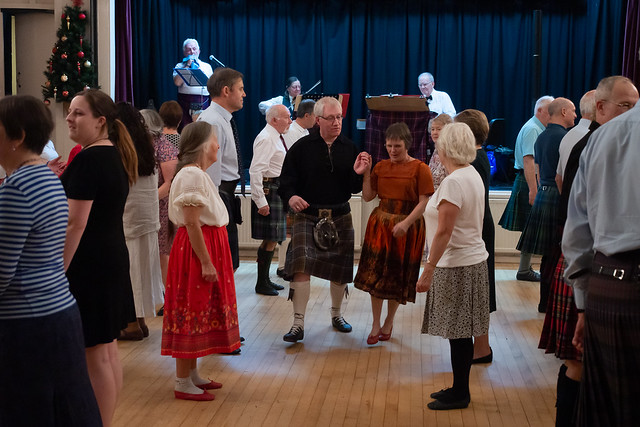About
So, what is Scottish Country Dancing?

Past and Present
Scottish Country Dancing is the modern form of the 18th Century country dances popular at that time in Scotland and England. The dance form was reinvigorated by the Scottish Country Dancing Society, later the Royal Scottish Country Dancing Society (RSCDS), in the 1920s when many traditional dances were recorded and codified. Since then thousands more dances have been devised and Scottish Country Dancing, or SCD, has devotees in many countries across the world
Types of dance
Most of the time dances are done in groups, or ‘sets’, of eight people of mixed sex facing each other in two lines of four. The forms of the dances can either be quick-time reels, hornpipes or jigs, which have a fast, lively character, or the slower, stately and elegant strathspey. Musical accompaniment is most often played on accordion, fiddle or piano.


Formations and steps
In the dances themselves, there is usually the opportunity for each couple in turn to dance a solo supported by the other members of the set. These solos are made up of standard figures, or ‘formations’, of which there are about a dozen or so basic ones that will get you through many of the dances in the cannon. There is a greater emphasis on ‘steps’ in SCD than there is in ceilidh dancing and there are two main kinds of steps that need to be learned: travelling steps, such as skip change of step for quick-time dances and strathspey travelling step for the slow strathspeys, and setting steps, such as the quick-time pas de basque and the slow-time common schottische.
Fun, fitness and friendship
Keep active and organized with Scottish country dancing. Teamwork is the order of the day; members of a set need to help each other through the formations of the dance, to ensure that everyone gets to the right place at the right time, with much fun to be had in the process.



